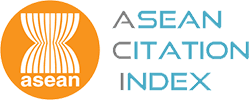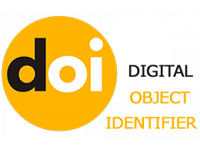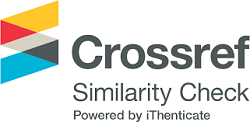The Impacts of Red-emitting Mg2TiO4:Mn4+ Phosphor on Color Quality of Dual-layer Remote Phosphor Configuration
Abstract
In terms of luminous flux, the remote phosphor structure is better than conformal structure or in-cup phosphor structure, however, this structure often has inferior color quality compared to the others. As a result, many studies have been conducted to nd a solution to the drawback mentioned above. In this research, we are after the same goal using WLEDs structure with color temperature of 5600 K and come to the conclusion that dual-layer phosphor structure can improve the color rendering index (CRI) and the color quality scale (CQS). The concept of the research is to place red phosphor layer Mg2TiO4:Mn4+ on a yellow phosphor layer YAG:Ce3+ and locate the concentration of Mg2TiO4:Mn4+ that allows the color quality to reach the highest value. The result shows that Mg2TiO4:Mn4+ benets CRI and CQS, more specifically, the addition of Mg2TiO4:Mn4+ in WLEDs boosts the red light component, thus, enhancing CRI and CQS. However, it is demonstrated through the application of Mie-scattering theory and Lambert-Beer law that when the concentration of Mg2TiO4:Mn4+ exceed the limit, it can harm the luminous flux of WLEDs. The result of this research is a valuable contribution to improving the techniques of manufacturing better WLEDs with higher white light quality.

This is an Open Access article distributed under the terms of the Creative Commons Attribution License (http://creativecommons.org/licenses/by/4.0/), which permits unrestricted use, distribution, and reproduction in any medium provided the original work is properly cited.

This is an Open Access article distributed under the terms of the Creative Commons Attribution License (http://creativecommons.org/licenses/by/4.0/), which permits unrestricted use, distribution, and reproduction in any medium provided the original work is properly cited.
Keywords
Dual-layer Remote Phosphor Geometry, WLEDs, Mie-scattering Theory, Color Uniformity, Luminous Flux
Full Text:
PDFTime cited: 0
DOI: http://dx.doi.org/10.25073/jaec.201933.250
Refbacks
- There are currently no refbacks.
Copyright (c) 2019 Journal of Advanced Engineering and Computation









